This post has not been edited by the GamesBeat staff. Opinions by GamesBeat community writers do not necessarily reflect those of the staff.
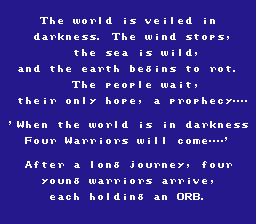
Much ado has been made about the Final Fantasy series. Each new installment (not just a new numbered one, but any new game with it’s name) gets lines in front of stores on opening night of fans waiting to get the game. The series have been critically acclaimed, and brought a bankrupt developer to become one of the biggest names in the industry. How did all this began? By the first Final Fantasy.
Named Final Fantasy because the developers believed that this would be the last game they will make before the studio closed, the first game in the series is very simple. With one screen, it shows the plot of the game, with another screen, shows whether to continue a game or beginning a new one, and another to create your characters, and then you are immediately thrown into the overworld.
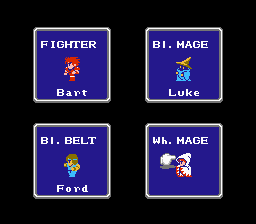
A concept that is considered high-tech with today’s big budget RPG’s, the ability to create your own characters, it was being done by this game since the very beginning. You can select what kind of character your party will consist off, each of them with their very different way to use and abilities, and give them a name (although it has to be 4 letters or less). Gamers used to today’s games might be overwhelmed by this alone.
After giving my characters the best 4 letter names I could think of, the game threw straight into the overworld. I walked towards the castle in the distance to find that some enemies kidnapped the King’s daughter, Princess Rosa, and decide to hire my party to go after her. Of course, you could not deny the king’s request, so the next step was going to town to get ready for the trip.
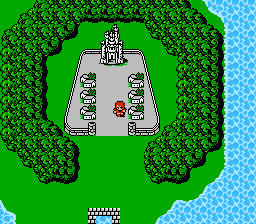
A short walk to the neighboring town later, and I was given a lot of choices again. This game has very little direction in where to go, in stark contrast to today’s RPG’s, where they tell you what you should get first or what to buy. In here, you have to go exploring in your own, going into every shop to see what they are selling.
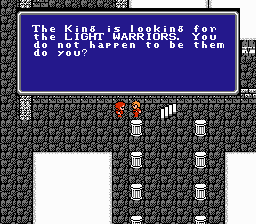
There is a lot of guess work, since the store tellers give you no information of what the item does, so you have to buy it first to see what it does, or even if your character can even use it. Luckily, if it turns out what you bought is of no use to you, you can quickly sell it back (although at less of half the cost, of course). It can take a lot of trial and error, and money is short in supply.
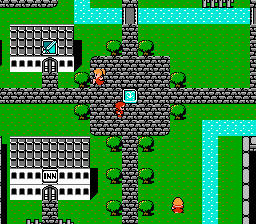
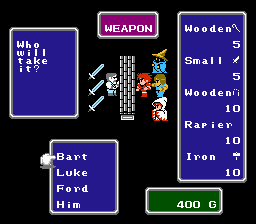
After equipping my characters with satisfying weapons, teaching my mages useful magic, and filling their inventories full of healing potions, and left the town and ventured north to where the Princess was. A few steps in, and I was in my first battle.
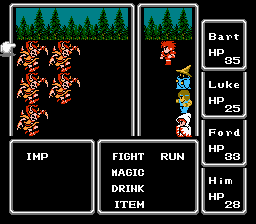
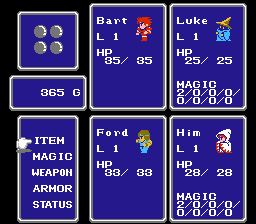
Unlike more modern Final Fantasies, which the battles are mostly cinematic animated cutscenes, in here; there is very little animation. It is all menus. However, it works almost exactly to today’s Final Fantasies, by choosing which character to attack, and your character will do it. The order in which the actions take place are annoying, since they seem to happen at random, but are still fun games of adding and subtracting HP points.
I managed to rescue the Princess after a boss fight, and the King gave me passage to another continent to continue the plot. Of course, the game features a great musical score; one, which is, has a lot more melody than today’s Final Fantasies. All the music, from the town theme, to the boss theme, to the now famous victory music is very catchy and will have you singing them in your sleep. I recommend any modern gamers to take this quest.